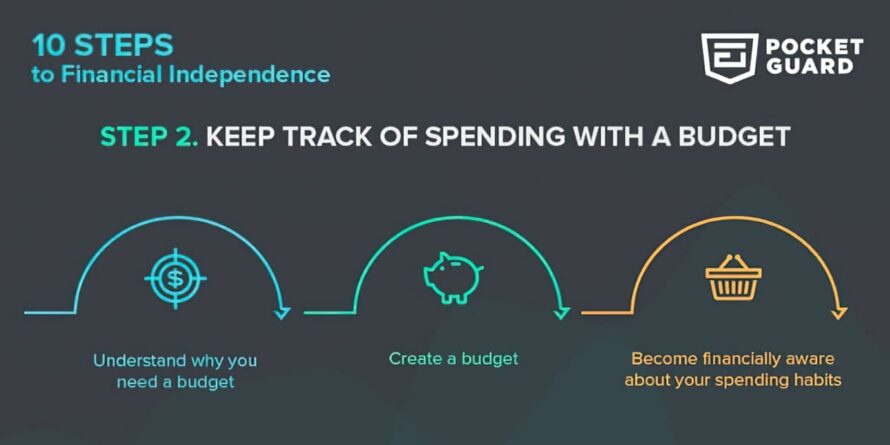If you never had a budget before — don’t be afraid. It’s easier than it looks! Budget is simply a document that shows your income and expenses.
STEP 2: KEEP TRACK OF SPENDING WITH A BUDGET
Understand why you need a budget
There are a few good reasons to create a budget, like keeping track of your expenses, making adjustments to spending and helping you plan for the future.
Without a complete listing of the money you have coming in and money you have going out, you’ll never know whether you have discretionary income at the end of the month or if you are in the negative and resort to going into debt to cover your expenses. The budget makes it easy to see if you need to cut spending, what percentage of your income goes to each expense category and whether you have enough left over to save for your goals.
Create a budget
You can create a budget in a notebook, in a Word document, in an Excel spreadsheet or in one of the numerous apps developed just for that. What tools you use is up to you, but make sure you follow these rules:
1. List all of your expenses. No matter how small an expense is, be sure to add it.
2. Pay attention to expense timeframes. If you spend money on something weekly, remember to calculate the total monthly cost. Alternatively, if you pay a bill quarterly, don’t forget to find its monthly value.
3. Don’t forget sneaky bills. Many people tend to forget to add things like online subscriptions, bank fees, etc.
4. Keep occasional expenses in mind. This includes things like oil changes, haircuts and gifts. Speaking of gifts… If you buy Christmas gifts, it’s a good idea to break their total cost over a 12-month period and see how much they add to your monthly expenses. Maybe if you put away some money each month towards Christmas presents, you won’t have to pay off your credit card bill and the accompanying charges for the rest of the year…
5. Categorize your expenses. We recommend the following basic categories:
a. Housing and utilities
b. Groceries and household supplies
c. Loans and credit payments
d. Auto and Gas
e. Entertainment and vacation
f. Insurance
g. Gifts and donations
h. Savings
6. Calculate total income and total expenses.
7. Subtract your total expenses from your total income. The result is your discretionary income. You may have positive or negative discretionary income (we’re keeping our fingers crossed that it’s positive).
8. Calculate what percentage of your income each expense comprises. This just helps put things in perspective. If entertainment makes up 40% of your expenses, you may need to rethink a few things…
9. Decide what to do with your discretionary income. If you have positive discretionary income, you can choose to spend it or increase one of your expenses (for example, you may want to upgrade your cable service…) or you may choose to direct it to savings or pay off debt.
If you have negative discretionary income, you will need to either cut expenses or find a way to make more money.
Ultimately, budgeting is about awareness — knowing where your money goes. And often times, the reason people don’t have a budget is that they are simply scared to take a look at their spending habits. The sooner you do though, the sooner you can become financially aware and consequently, financially independent.
Aug 03, 2017
Aug 03, 2017



